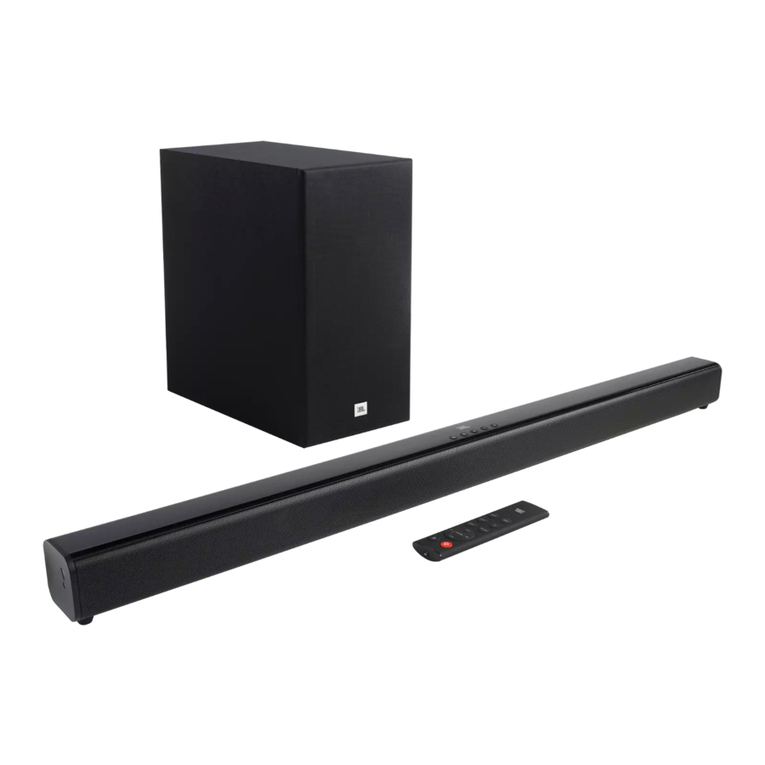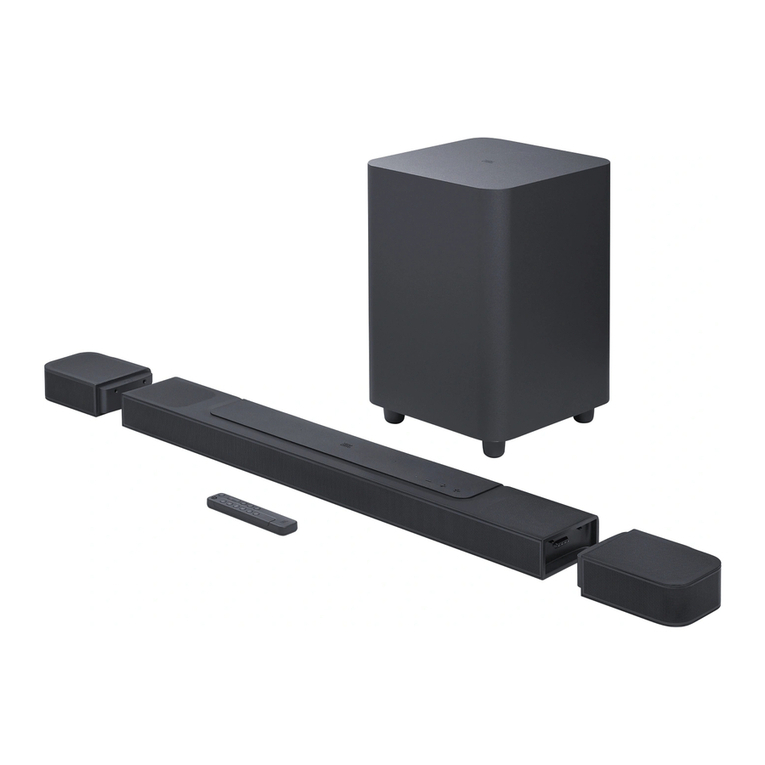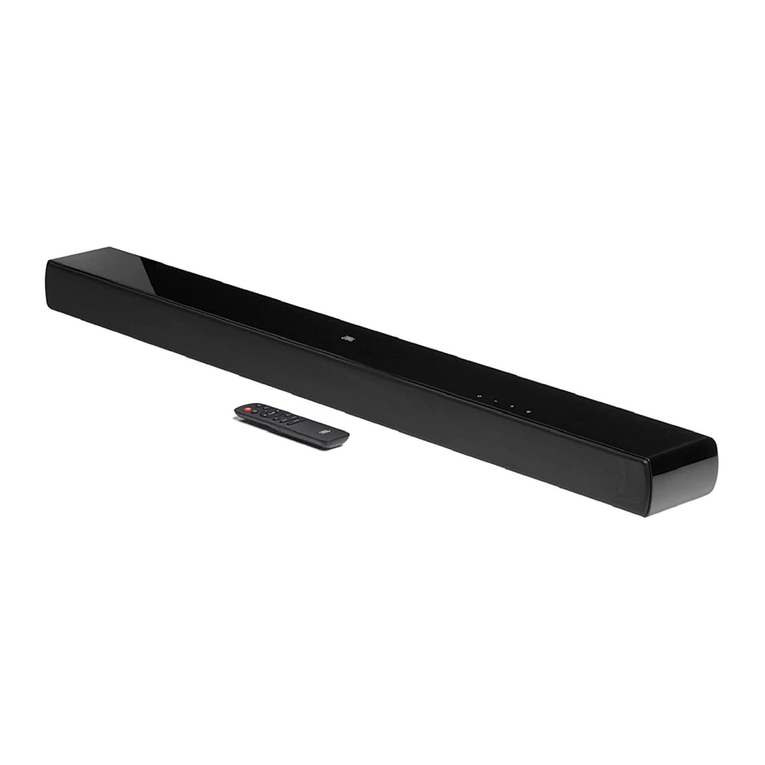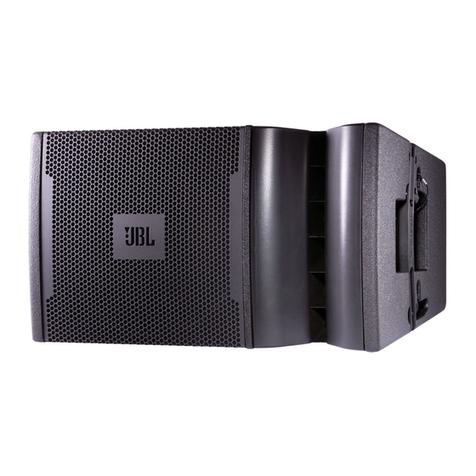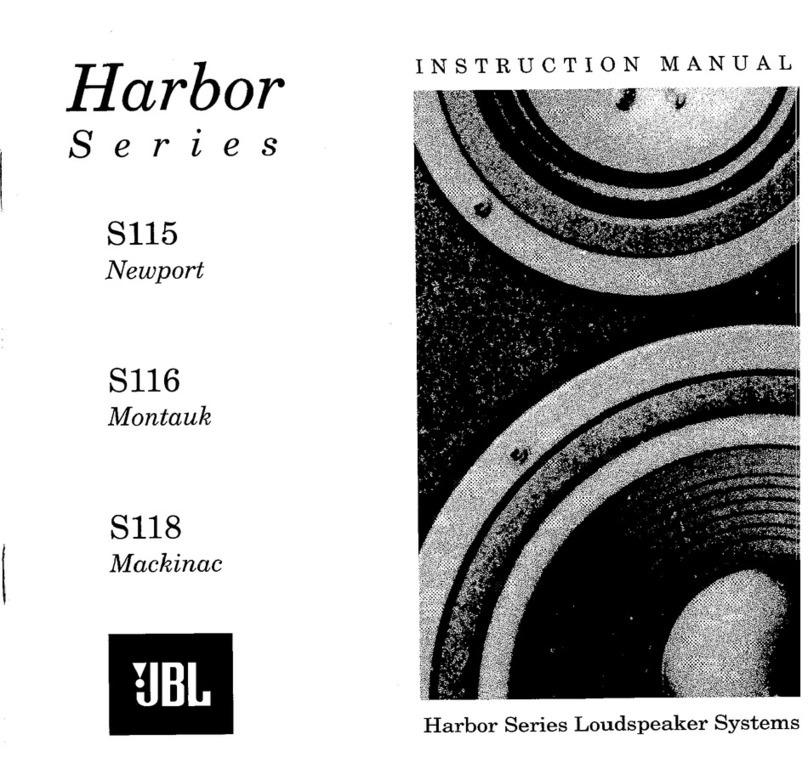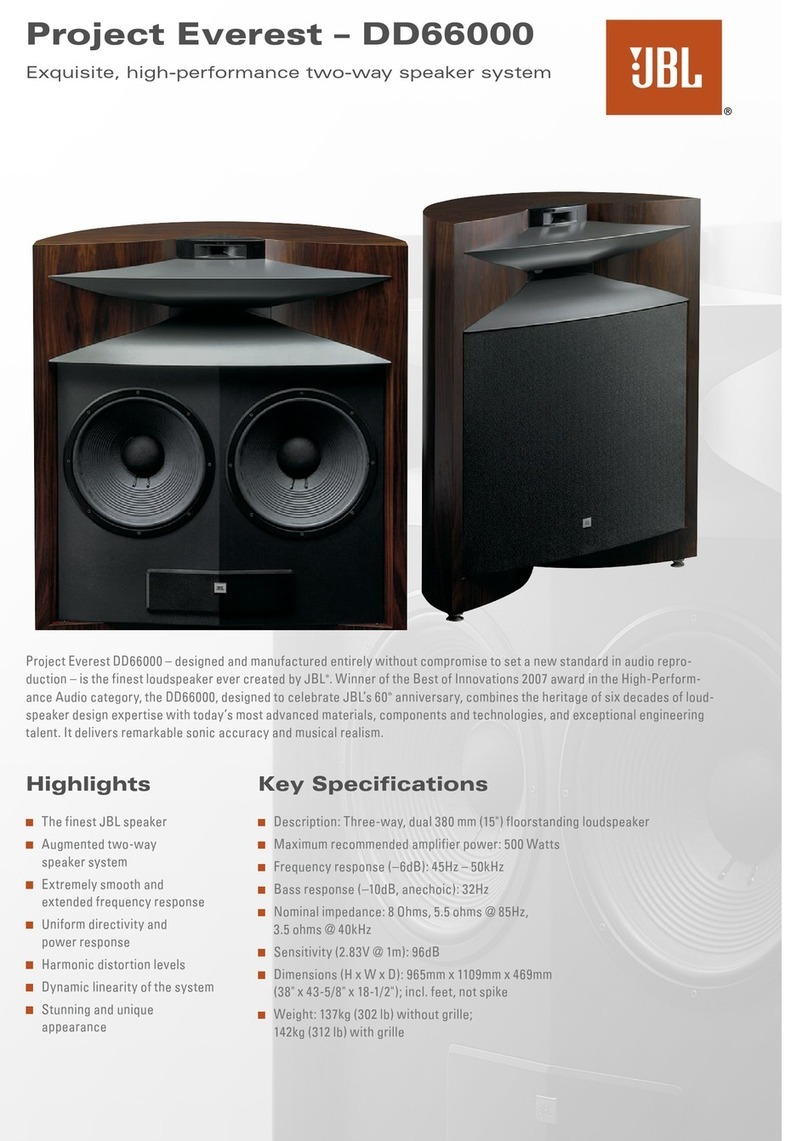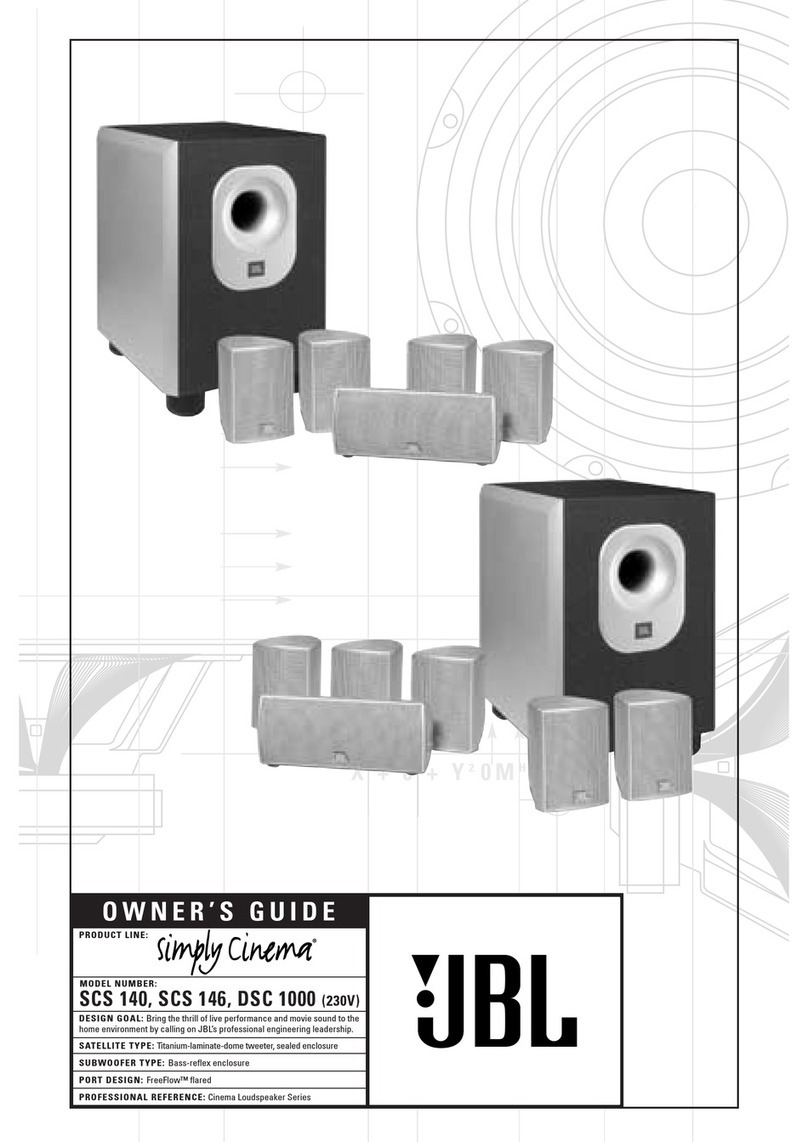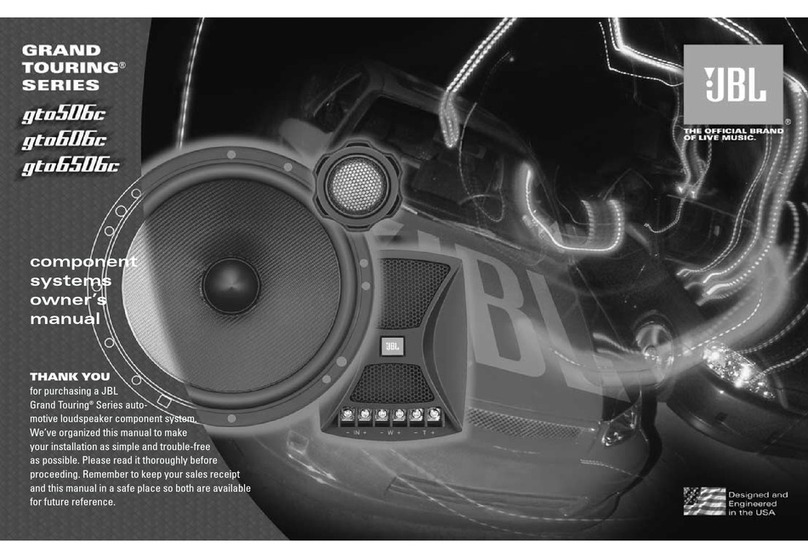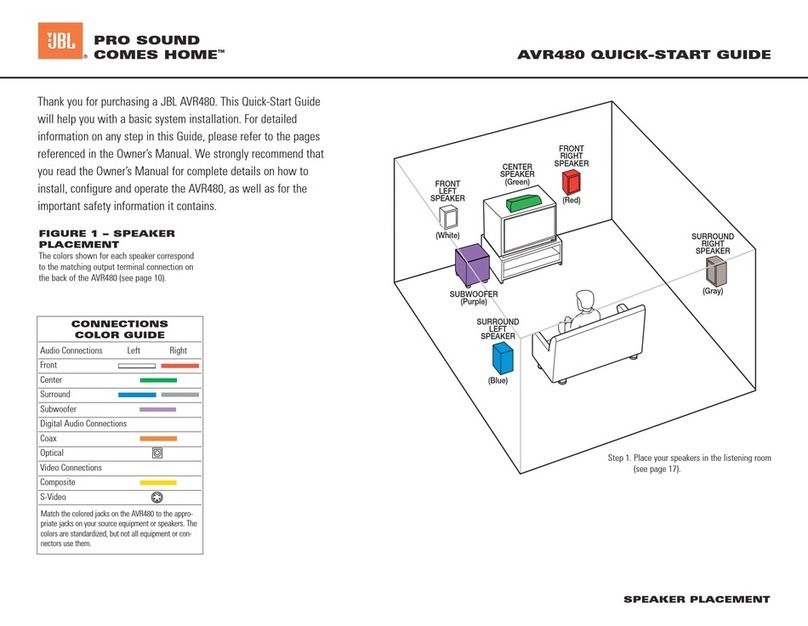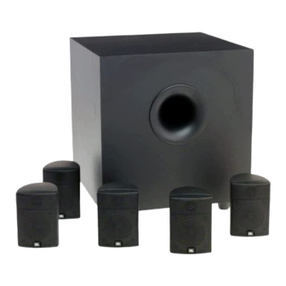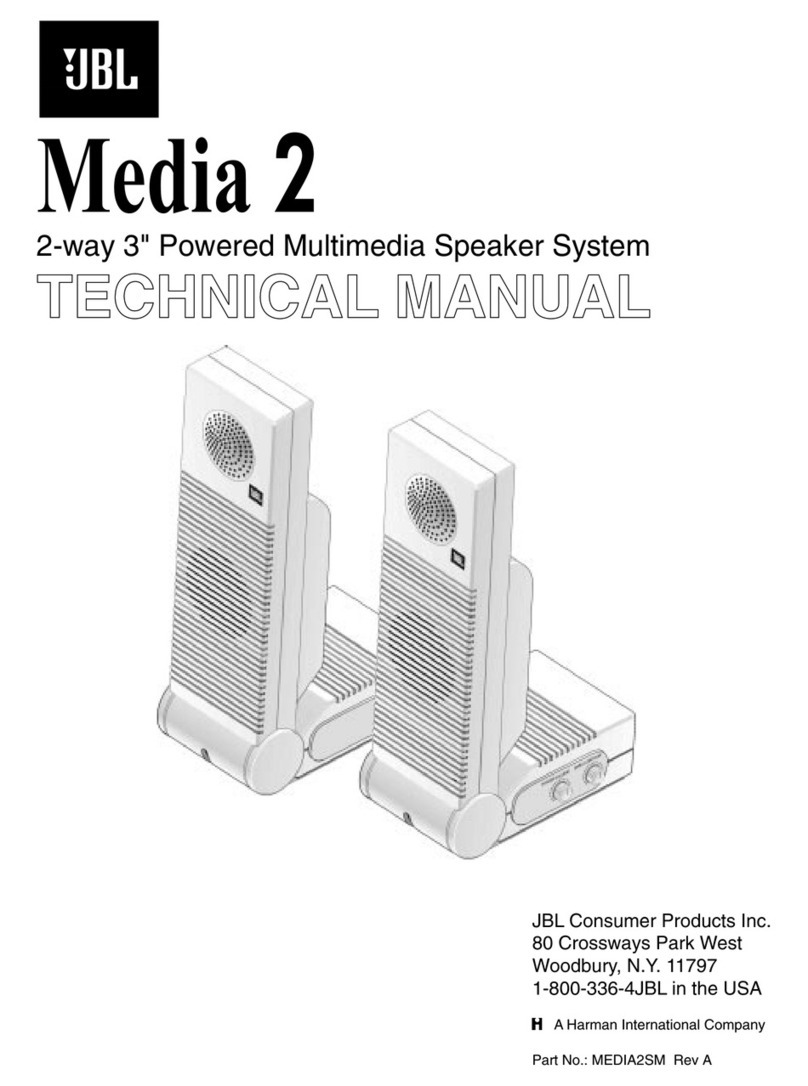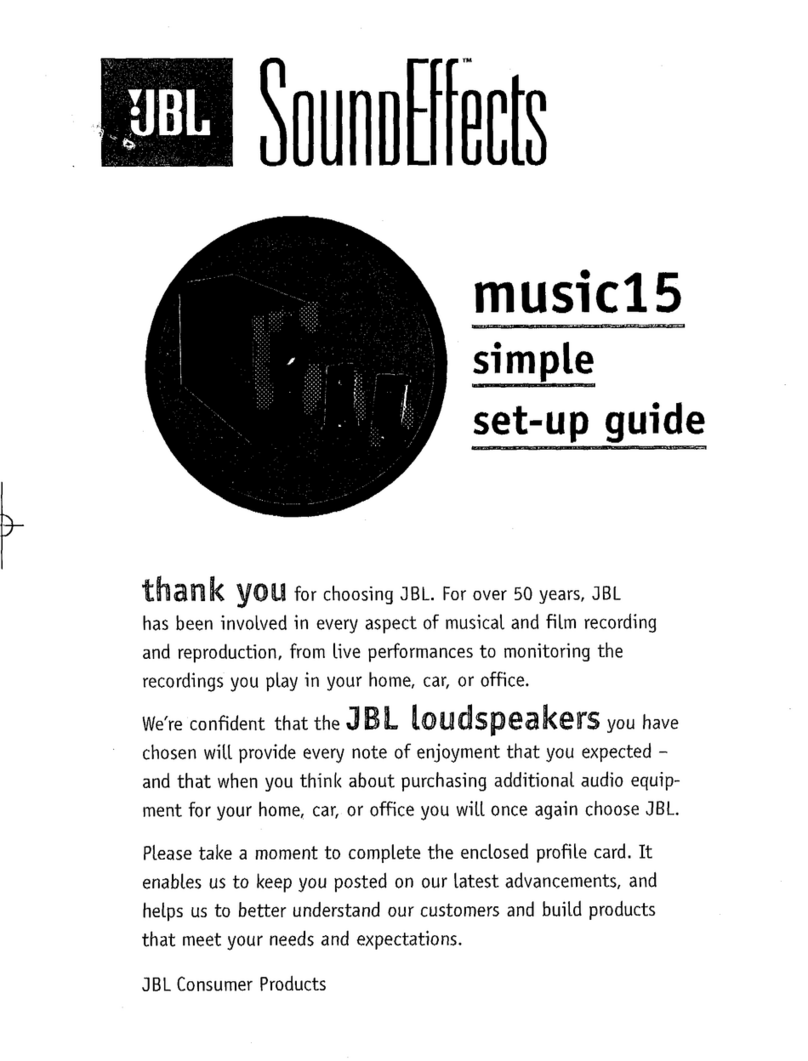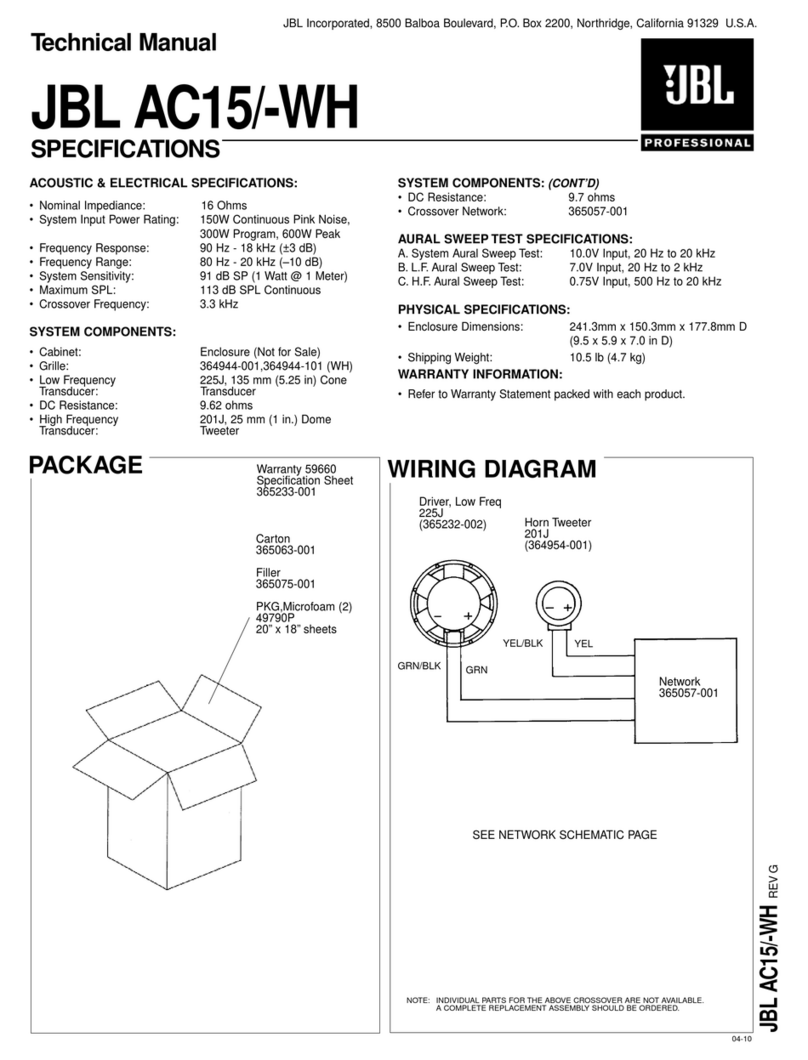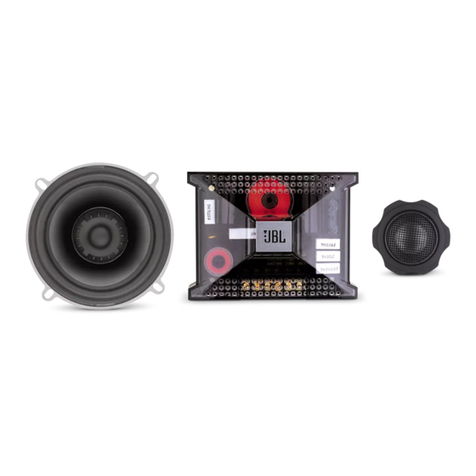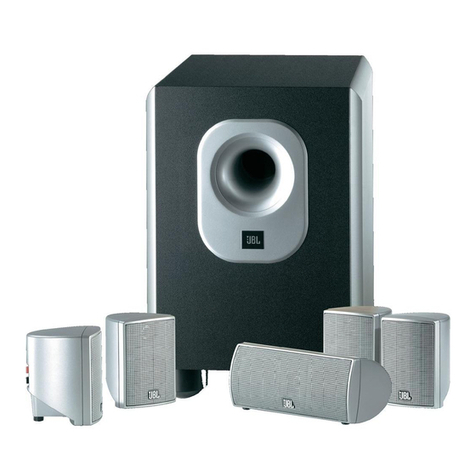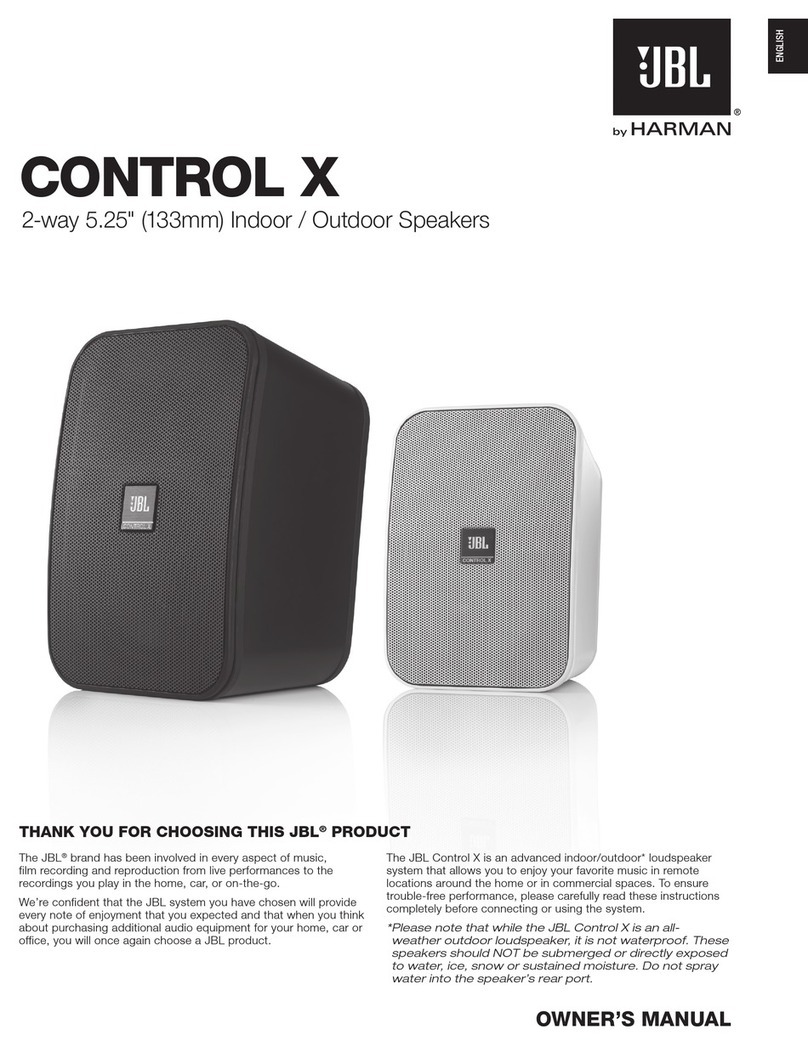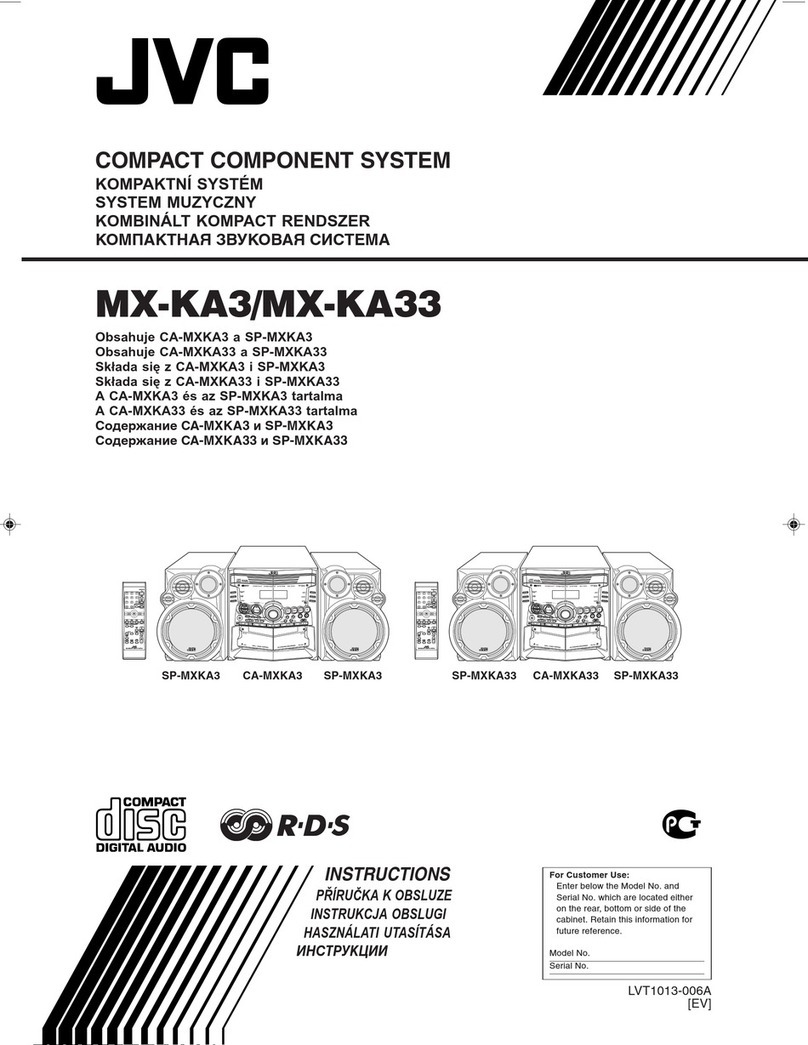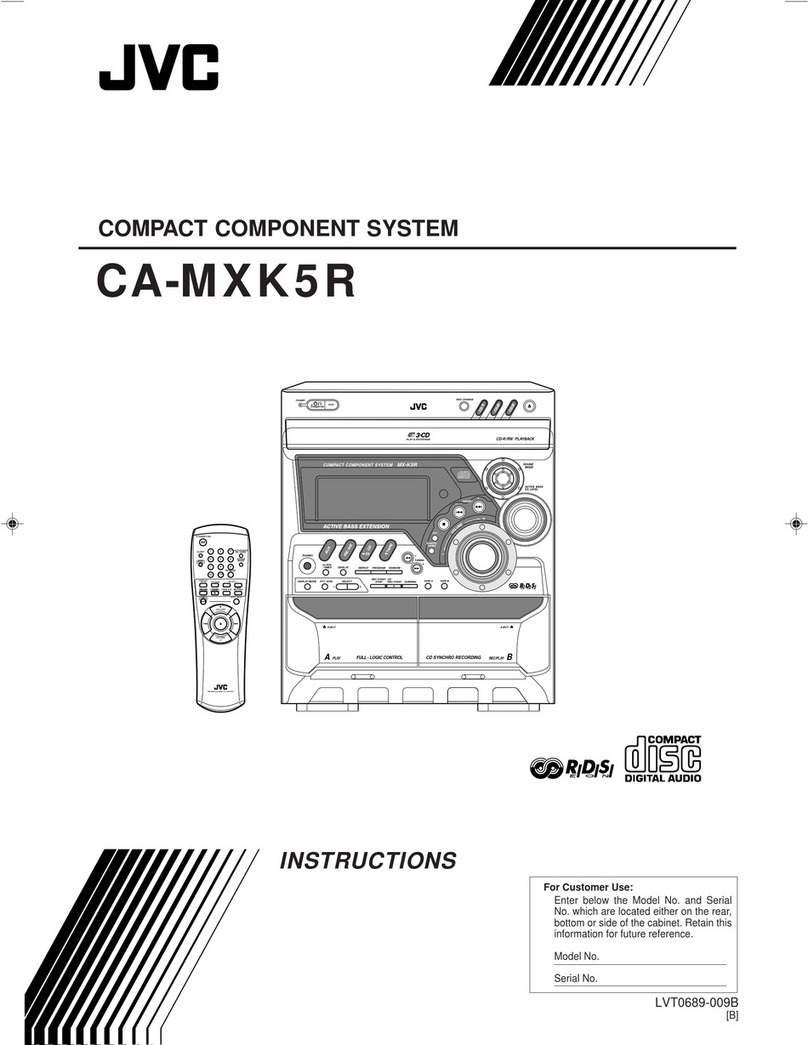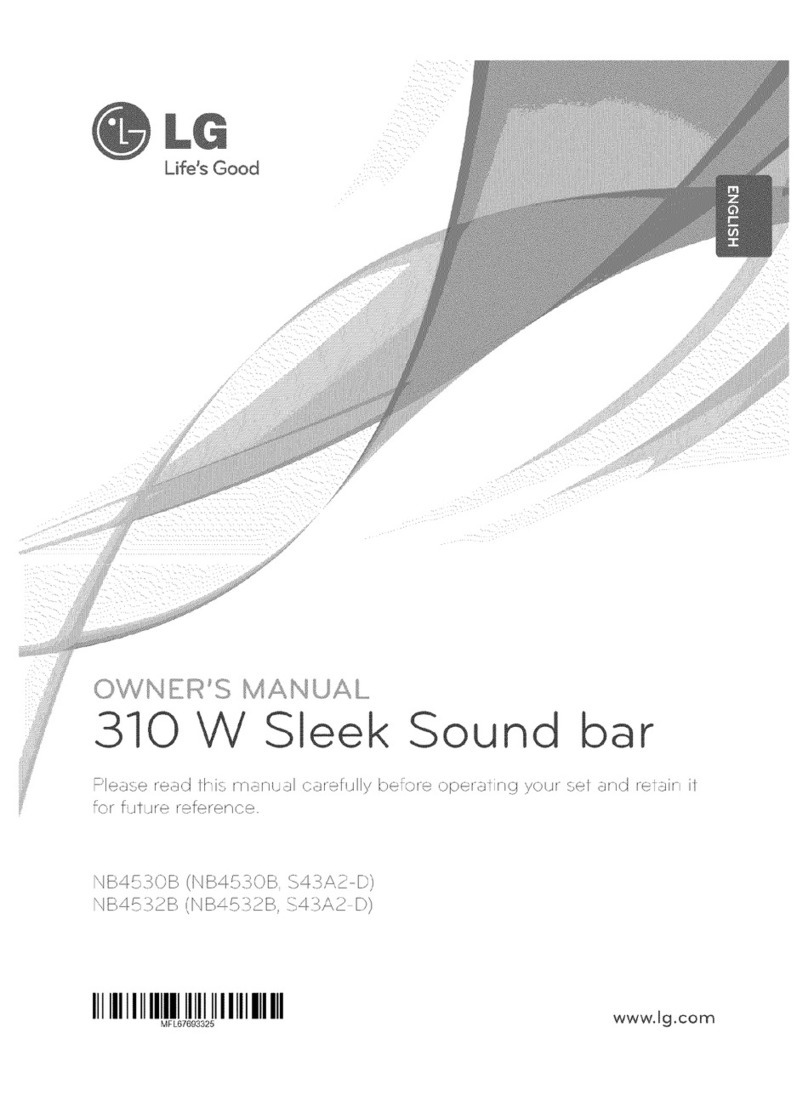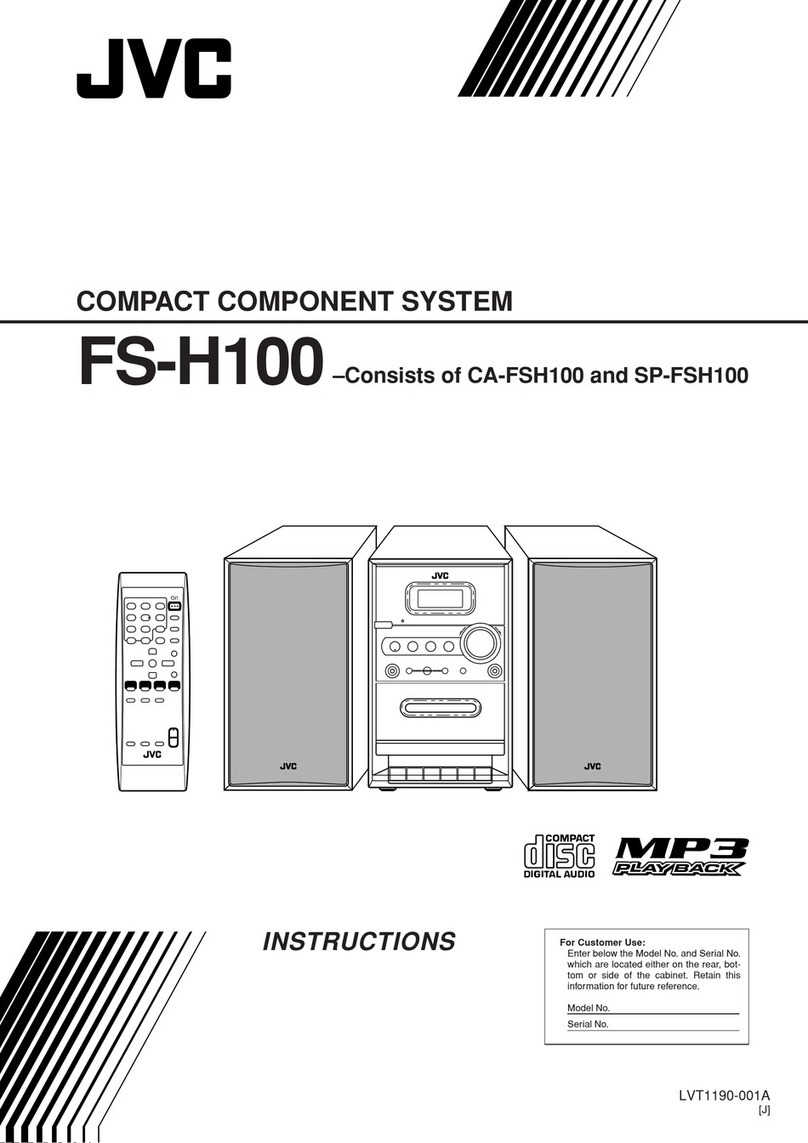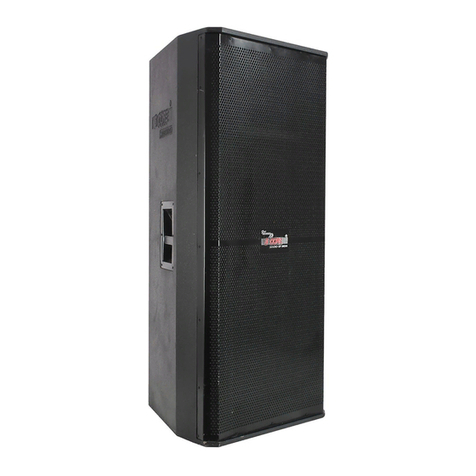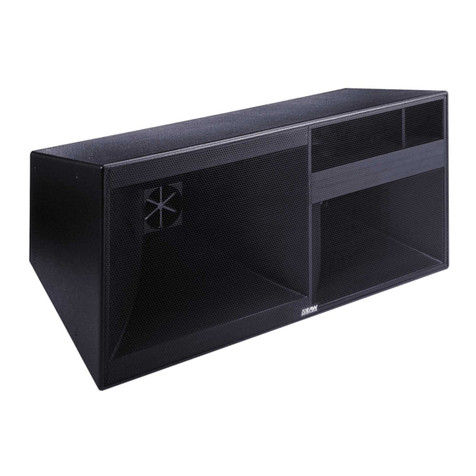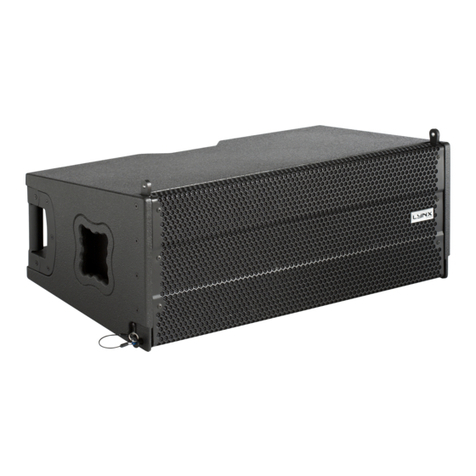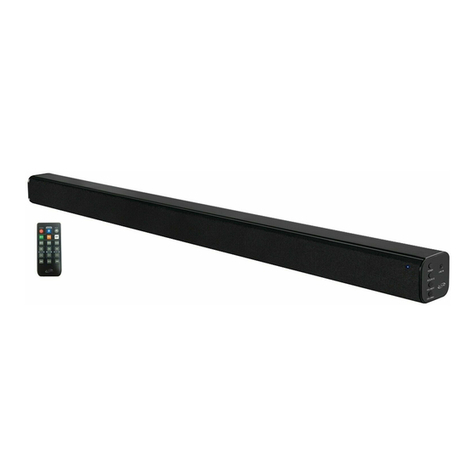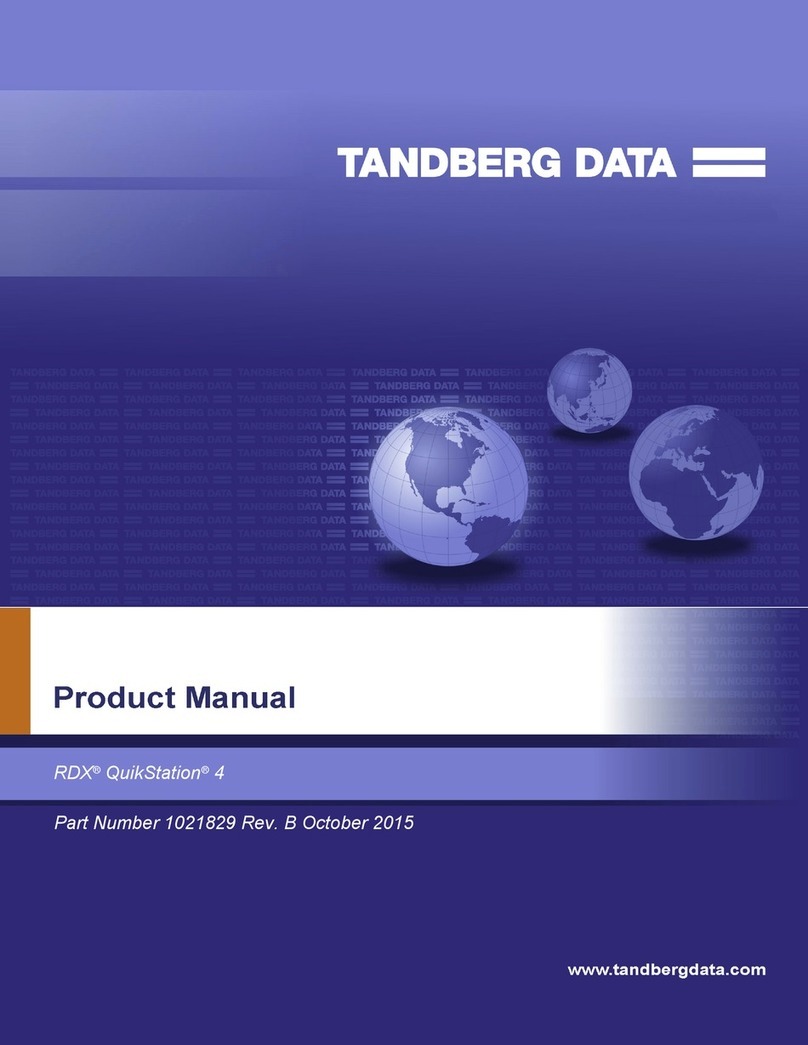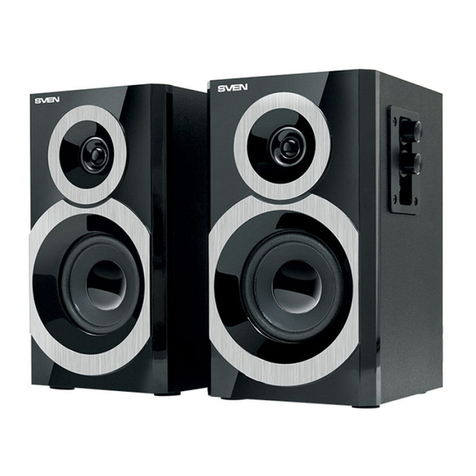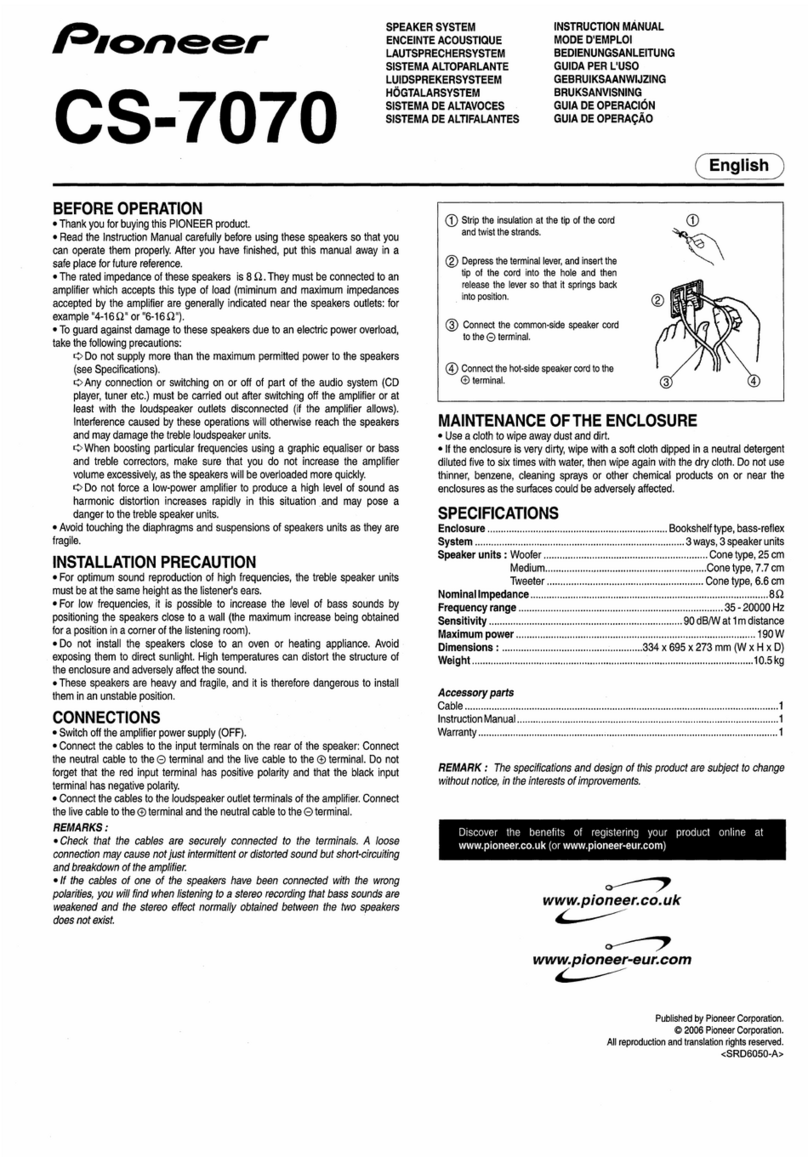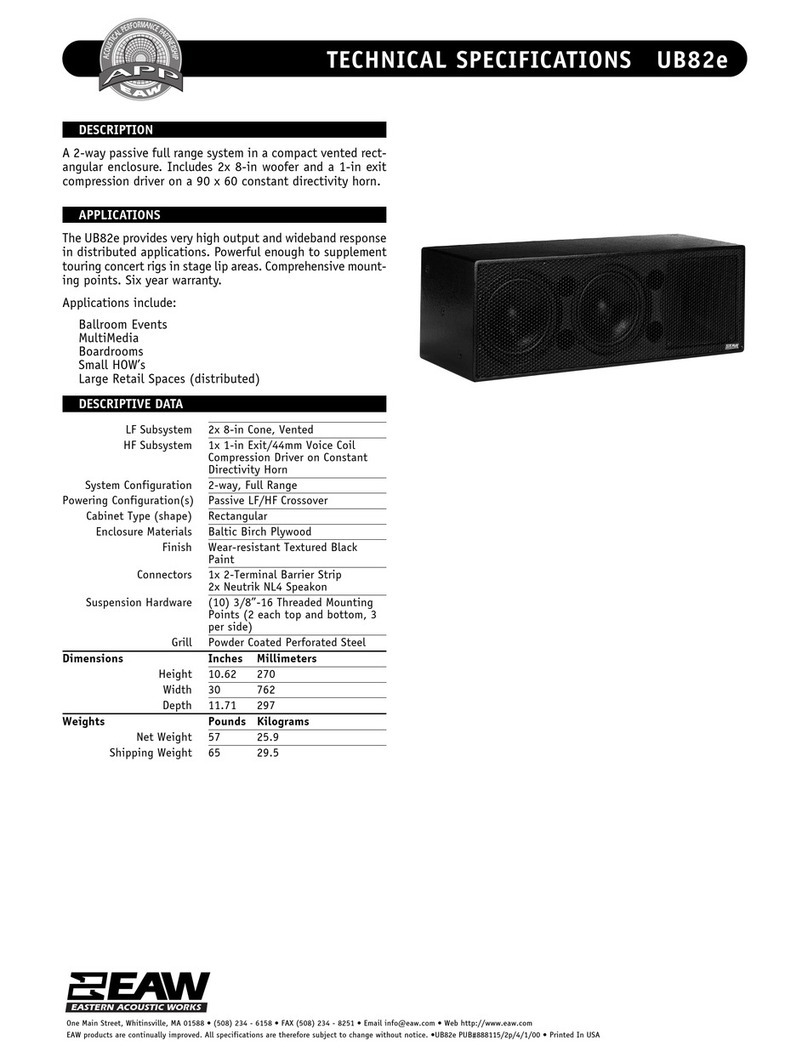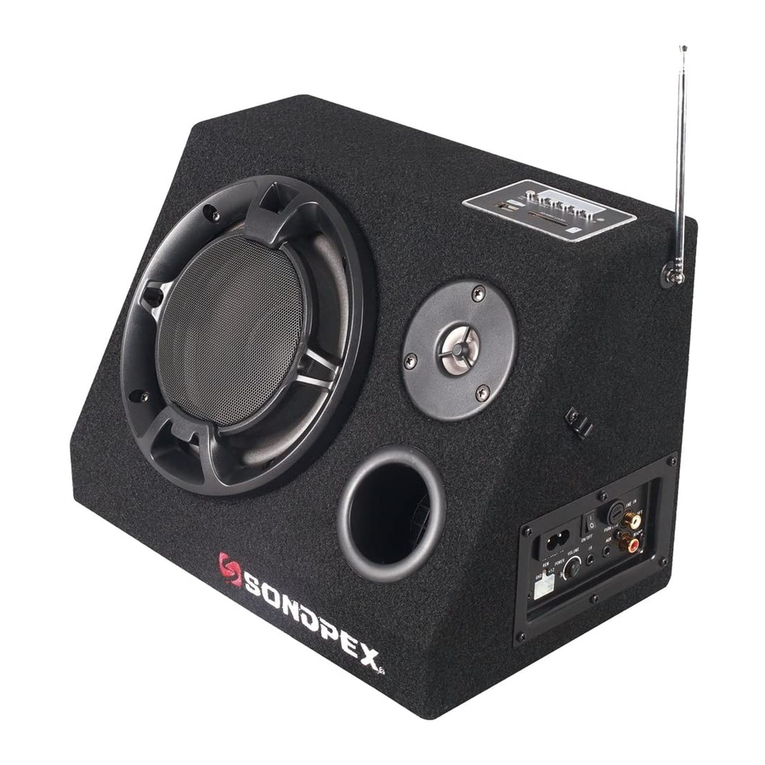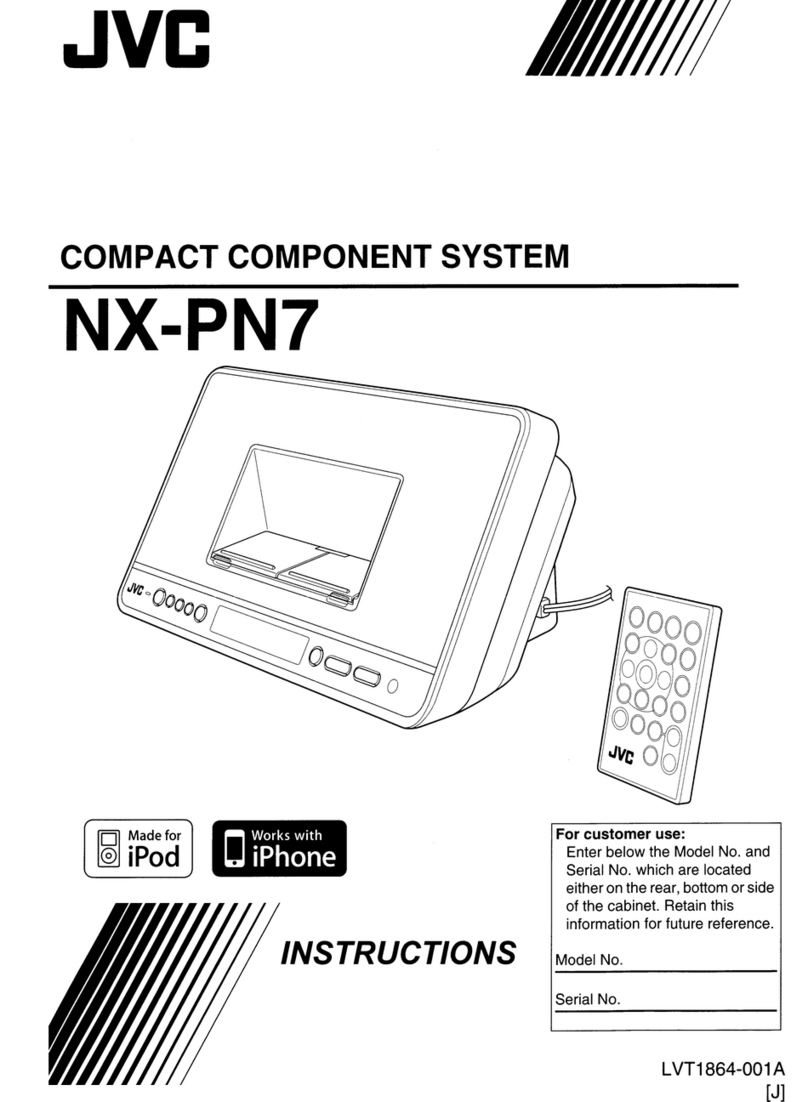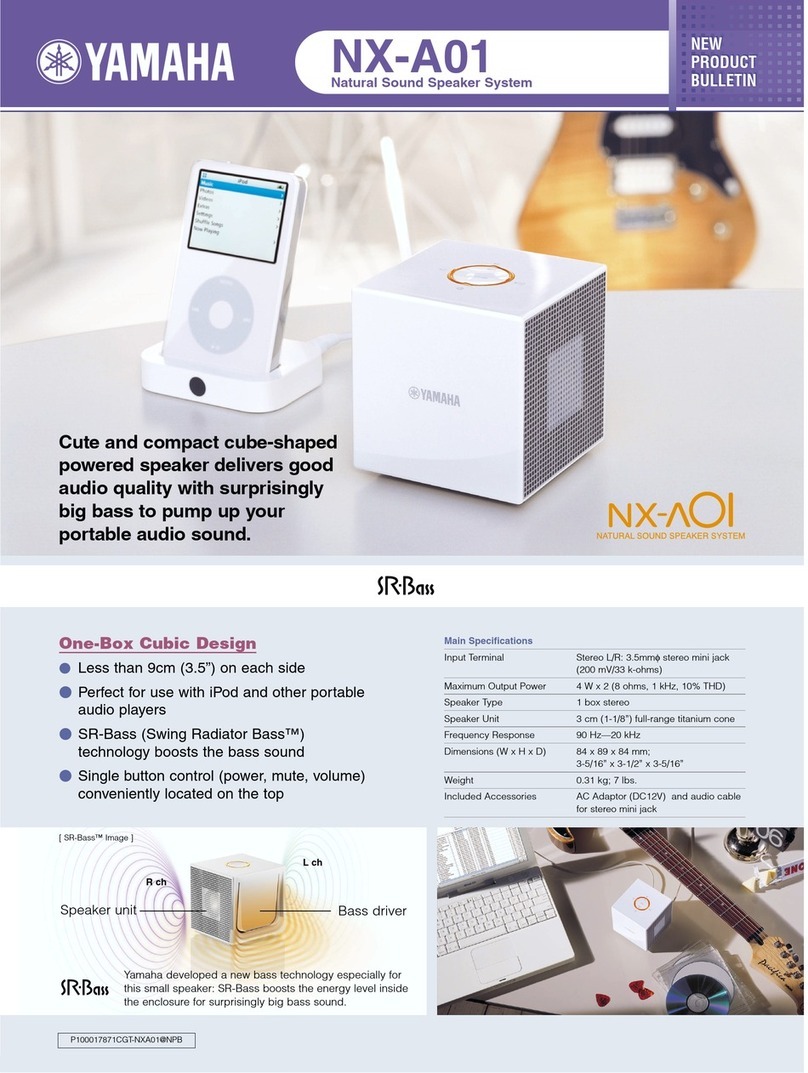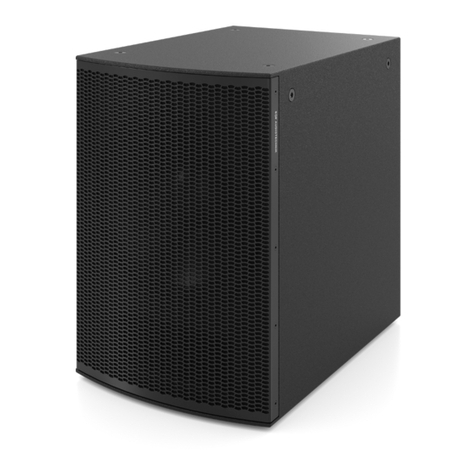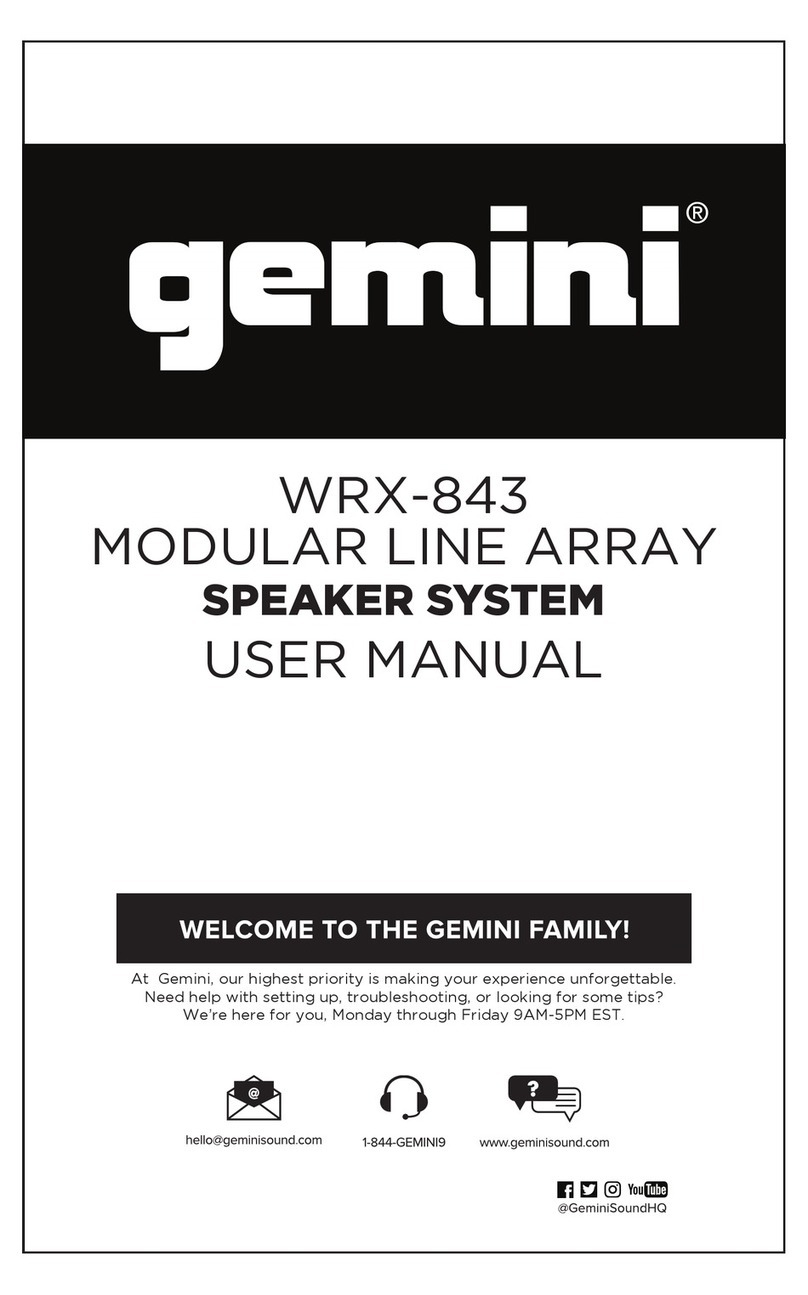
Since Project Everest was introduced,sound recording and playback
technology has undergone a revolution of its own. With the advent of CD,
extremely demanding recorded signals had become the rule rather than the
exception -the average source material used by the typical audio enthusiast had
become superior to the best demonstration materialof even just a few years ago.
In overall dynamics and transient response, transducers are once again a
potential weak link in the high-end audio reproduction chain.
It was in this environment that JBL setout to create its fourth and fifthProject
loudspeakers, K2 S9500 and K2 S5500.As with Hartsfield, the puritan
simplicity of a two-way system was considered the most promising design
track. Advances in transducer design and lowfrequency alignment would make
the construction of a two-way system ofunprecedented physical and acoustical
scale possible. Engineers took the core components -the low and high
frequencydrivers -and optimized them by redesigning their magnetic
structures,diaphragms and framework for greater linearity, dynamic capability
and transient response.
In the years following the introduction of the K2 S9500 and K2 S5500, sound
reproduction technology underwent another series of revolutionary changes,
with the introduction of DVD-Video, Dolby Digital, DTS, DVD-Audio, and
Super Audio CD (SACD). Frequency responses to 50 kHz and 3-digit dynamic
range and signal-to-noise ratios have now become commonplace. In order to
faithfully reproduce such robust sonic properties, the loudspeaker needed to
undergo drastic improvements to its transducer, network and enclosure
technologies.
The new K2 S9800 employed a 3-way design, incorporating an Ultra High
Frequency (UHF) compression driver and horn to reproduce high frequencies
up to 50 kHz. With the UHF handling the high frequencies, the High Frequency
(HF) transducer could then be upgraded to a new design using a 3 inch
diaphragm for better reproduction of lower frequencies and betterblend with
the woofer than the oldergenerations’ 2-inch diaphragm. Both compression
drivers utilized newly developed Beryllium diaphragms to provide the lowest
distortion and flattest frequency response possible.
In order torecreate the extremely high dynamic range provided by today’s
audio sources, a brand new low frequency transducer was developed from
ground up, utilizing an Alnico magnet,4-inch edge wound Voice Coil, and a 15
inch cone. Extensive computer-aided engineering and design effort made to
develop the optimized port tuning employed inProject K2 S9800 has resulted
in a significant advance in the concept of state-of-the-art acoustic reproduction.
